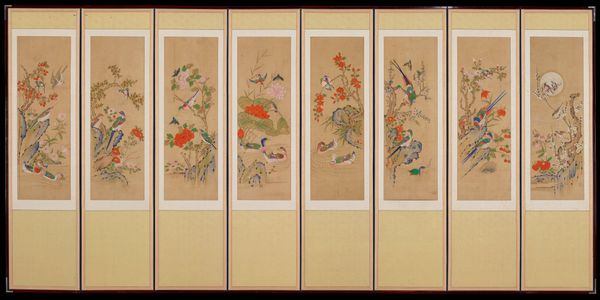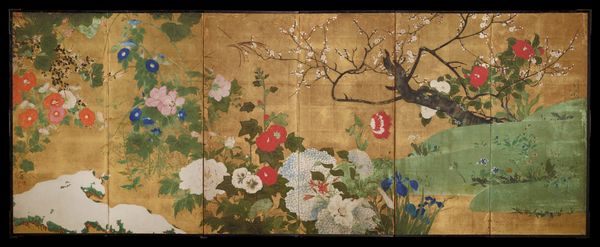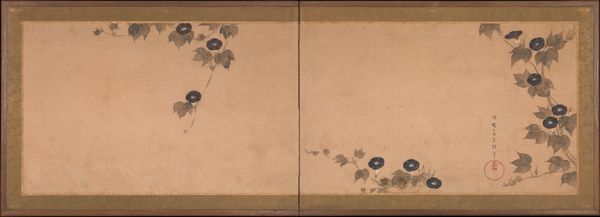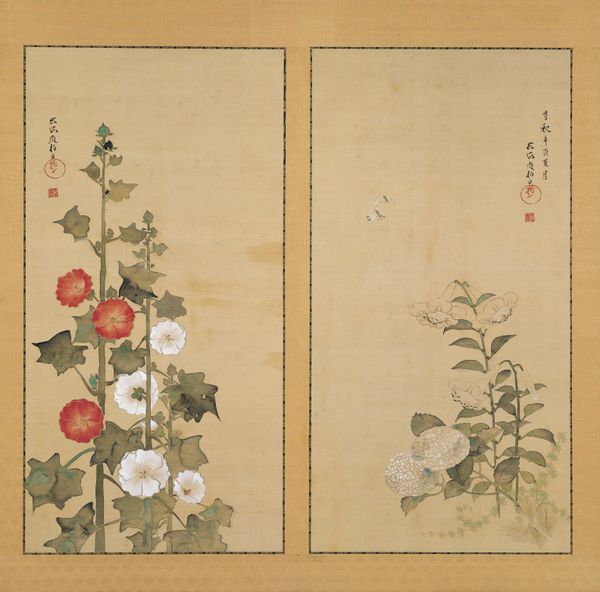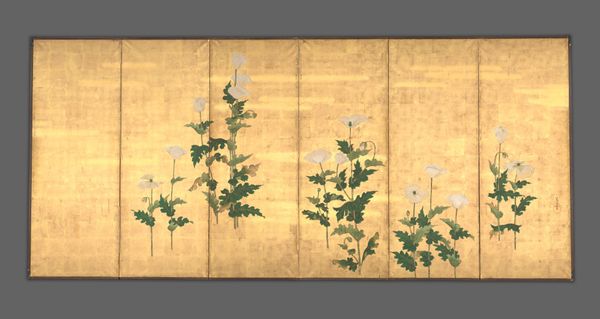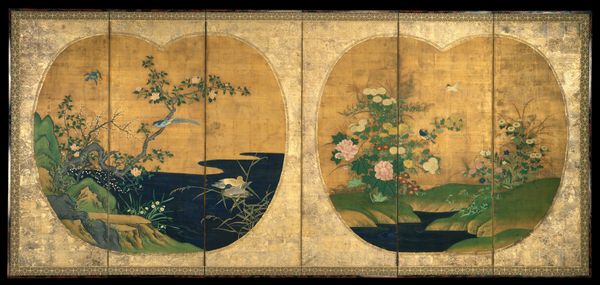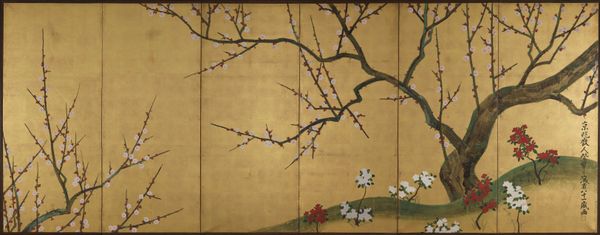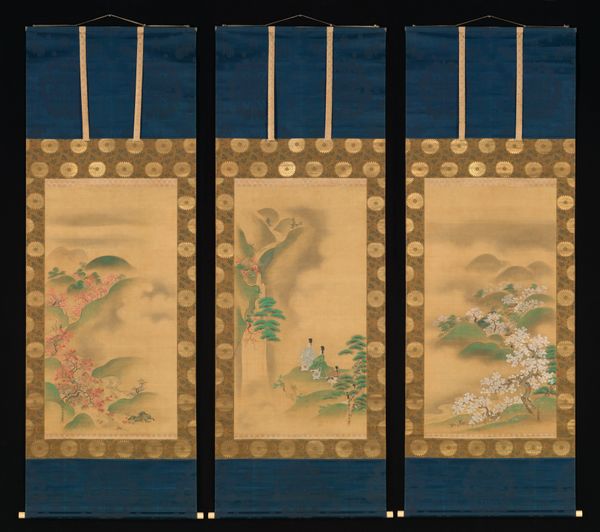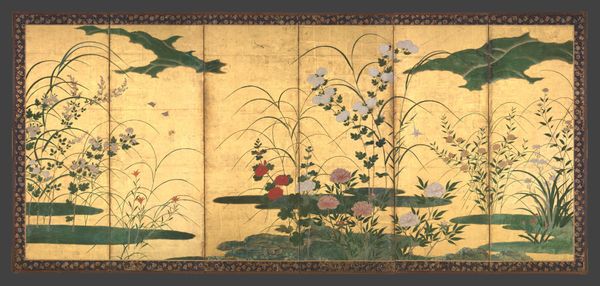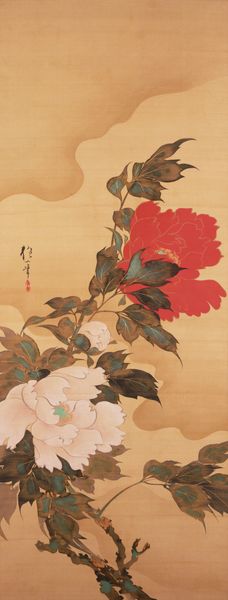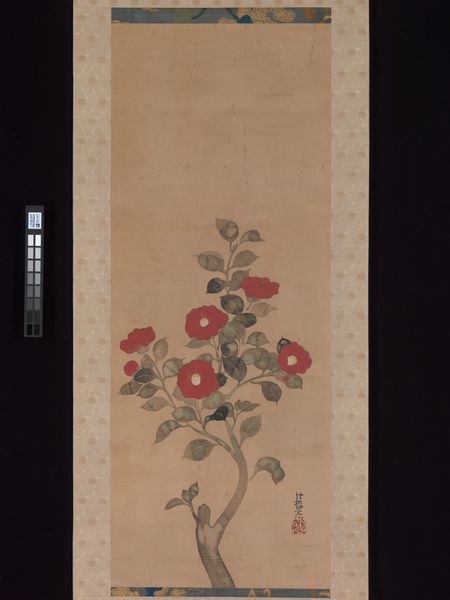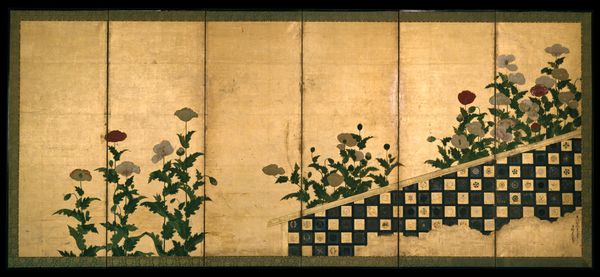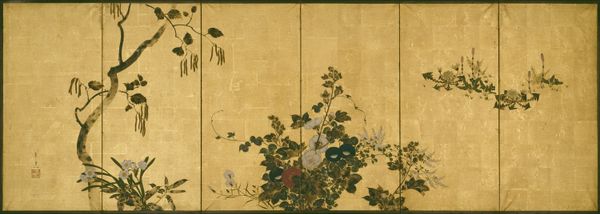![Hollyhocks [left of a pair of Plum Trees and Hollyhocks] by Ogata Kenzan 尾形乾山](/_next/image?url=https%3A%2F%2Fd2w8kbdekdi1gv.cloudfront.net%2FeyJidWNrZXQiOiAiYXJ0ZXJhLWltYWdlcy1idWNrZXQiLCAia2V5IjogImFydHdvcmtzL2E4Zjc1ZjdjLTE2OGUtNGUxOC05N2VlLTJkMWU2ODIzODIwOS9hOGY3NWY3Yy0xNjhlLTRlMTgtOTdlZS0yZDFlNjgyMzgyMDlfZnVsbC5qcGciLCAiZWRpdHMiOiB7InJlc2l6ZSI6IHsid2lkdGgiOiAxOTIwLCAiaGVpZ2h0IjogMTkyMCwgImZpdCI6ICJpbnNpZGUifX19&w=3840&q=75)
Hollyhocks [left of a pair of Plum Trees and Hollyhocks] c. 18th century
0:00
0:00
painting
#
painting
#
asian-art
#
landscape
#
ukiyo-e
#
japan
#
orientalism
#
earthenware
#
watercolor
#
calligraphy
Dimensions: 43 1/2 × 113 in. (110.49 × 287.02 cm) (image)45 × 114 1/2 × 5/8 in. (114.3 × 290.83 × 1.59 cm)
Copyright: Public Domain
Ogata Kenzan created this section of a pair of folding screens, using ink and color on gold-leafed paper, sometime in the early 18th century. Kenzan came from a distinguished Kyoto family, and his work reflects the cultural vibrancy of the Edo period. These Hollyhocks, rendered in a stylized, almost abstract manner, rise against a shimmering gold background. The choice of hollyhocks is interesting as it moves away from traditional high-status flowers. The gold background would have reflected light around the room, creating an immersive environment. Screens like this were not just decorative; they were integral to the experience of domestic space, shaping social interactions. Kenzan’s work blurs the lines between craft and art. Ultimately, this screen invites us to consider how beauty and artistry intersect with the everyday, and how this intersection shapes our perceptions and experiences.
Comments
minneapolisinstituteofart almost 2 years ago
⋮
Ogata Kenzan is best known as a potter, but he was also a successful painter, especially after moving from Kyoto to Edo in his late sixties. Kenzan was the younger brother of painter Ogata Kōrin, from whom the decorative Rinpa school takes its name—rin from Kōrin paired with pa, meaning “school.” On a ground of gold leaf, Kenzan presents red and white camellias blooming on a small hillock below a large plum tree at right and, at left, pink, white, and red hollyhocks. With this placement of the motifs, Kenzan turned the folded surface of the screen into a vital component of the composition.
Join the conversation
Join millions of artists and users on Artera today and experience the ultimate creative platform.
